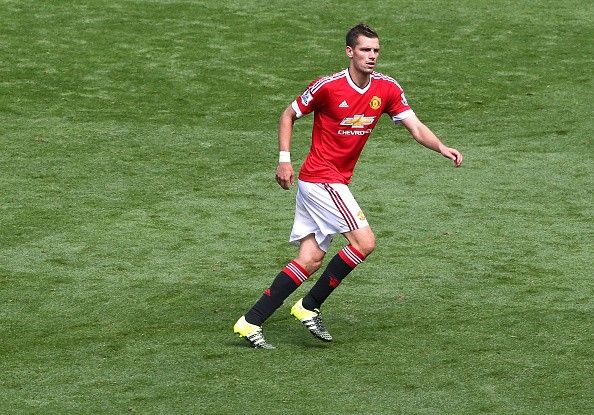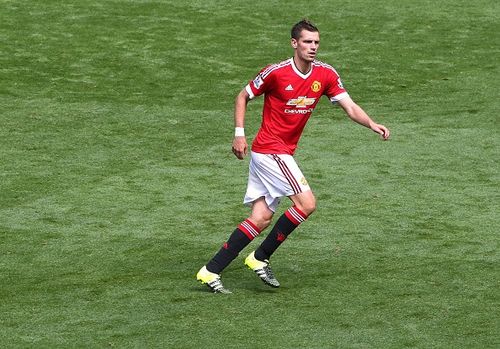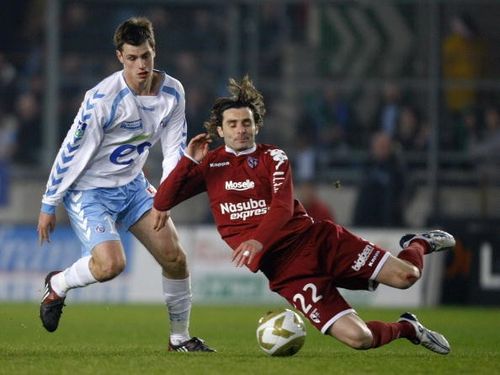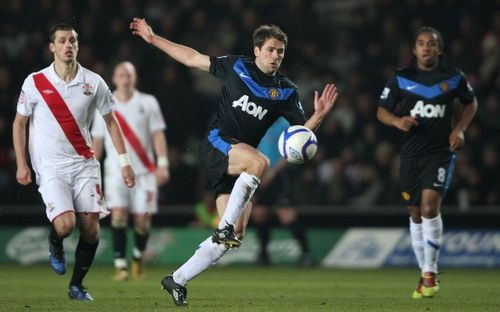
Morgan Schneiderlin: From a Southampton reject to Manchester United recruit

For any other club in the Championship that season it would have represented a major coup, but for Southampton, desperately staving off the looming threat of administration, the signing of a promising French under-19 international was baffling.
The summer of 2008 was a turbulent one for Southampton Football Club: the divisive ex-Chairman Rupert Lowe returned, manager Nigel Pearson was moved on, and nearly every high earner among the playing staff was either sold or loaned out. A first team squad that had only survived on the final day of the previous season was left completely decimated.
Lowe and Chairman Michael Wilde were relying on academy graduates to thrive in a notoriously gruelling and competitive league. They brought in two Dutch coaches, Jan Poortvliet and Mark Wotte, who optimistically promised to deliver “total football” to the South Coast. Wilde described the set-up as ‘a European-style coaching system with the objective of linking the academy to the first team, creating opportunities that might not occur within the traditional English management structure’. It was a positive spin on a perilous situation.
Despite the pressing need for experience and quality going into the season, Lowe instead gambled on potential. Seven years on, it is still mystifying that he decided to spend £1.2 million on a single player in the midst of a deepening financial crisis that was soon to threaten the club’s very existence.
It is even more astounding that this money was used to bring in a French teenager who had made just five first team appearances for his previous club RC Strasbourg. Lowe though was undeterred, believing he had signed a player of exceptional promise. Morgan Schneiderlin was the wrong player at the wrong club at the wrong time.
The season started well enough for Schneiderlin with some impressive displays and some fleeting, scarcely perceptible glimpses of the player he might become: the awareness of players around him and his effortless ability to switch play. But over the course of the campaign, he persistently struggled to impose himself on matches. The rest of the team fared little better.
Though Southampton were an intriguing proposition to watch for their occasional sporadic moments of brilliance like a dilettante poet that delivers one line of perfect clarity among several stanzas of profound gibberish, far too often they were outmuscled, outmanoeuvred and outplayed.
The changes in managerial personnel

The season ended with the ignominy of relegation and the black cloud of administration. Unfortunately for Schneiderlin, due to the circumstances of his transfer, he became symbolic of the whole failed regime and Lowe’s doomed Dutch experiment. This inauspicious start to his Saints career makes his transformation into one of the club’s most complete midfielders all the more extraordinary.
The following year under Alan Pardew, while all around him at Southampton was changing, Schneiderlin seemed dogged by the same familiar failings; unable to acclimatize to the speed and physicality of the English game. But whether it was through bloody-minded determination to prove his manager wrong or simply good coaching, Schneiderlin learned to adapt:
“[Pardew] was the one saying to me to improve on my defensive skills… he was the one who was telling me ‘come on, you need more tackling.’ So, thanks go to him and his words every day saying that to me.”
The Frenchman’s ability to assimilate new ideas became a hallmark of his time at Southampton. When Pardew was later replaced by Nigel Adkins and Southampton’s physicality and directness was tempered by a more possession-based game, Schneiderlin excelled as a key component of the team’s transition play from defence to attack.
Under Adkins, the team were routinely expected to play out from the back: as the centre backs both split, Schneiderlin dropped into an auxiliary centre-half position providing the extra man to counteract the opposition’s first press. From this position, he was able to carry the ball out from defence and instigate play with his measured passing. As Southampton climbed the leagues, Adkins reserved special praise for his pivot:
“Morgan has grown into one of the best midfielders in the Championship… I know when we get to the Premier League he will be one of the better players in there."
He was proved right. At the end of season awards, following Southampton’s first campaign back in the top flight, Schneiderlin won both the Fan’s Player and Player’s Player of the year awards. By that time, Adkins had been ruthlessly replaced by Mauricio Pochettino who helped Schneiderlin’s development even further by employing a high-energy, high-pressing style of play.
The Argentine’s tactics encouraged Schneiderlin to push further up the pitch – squeezing the space for opposition attackers and making use of his exceptional athleticism and ability to read the game. That year he topped the Premier League’s statistical rankings for both interceptions (139) and tackles won (146), and these figures have remained consistently high in the two seasons since.
When Koeman became Schneiderlin’s sixth manager at Southampton at the start of the 2014/15 season the Dutchman inherited a commanding, authoritative midfield general; the timid eighteen-year-old of a previous Dutch regime was a distant, fading memory.
The ‘in demand’ Morgan Schneiderlin

Schneiderlin’s departure to Manchester United this summer already looks more impactful than any loss of personnel Southampton suffered last season, his unwavering, assured presence alongside Victor Wanyama in Southampton’s midfield was a massive contributing factor to Southampton holding the second best defensive record in the division last year.
It looks no coincidence that while United have managed three clean sheets from three matches at the start of this season, The Saints are struggling to find an effective balance between defence and attack. Schneiderlin’s transfer also represents the greatest challenge yet of Southampton’s lauded recruitment system: how to replace the irreplaceable; a player that has become, over the last three seasons, the very heartbeat of the Southampton team. Their approach to the problem has been straight out of the Billy Beane handbook:
“The important thing is not to recreate the individual, the important thing is to recreate the aggregate.” (Billy Beane in Michael Lewis’s Moneyball)
Consequently, Southampton have signed two players to replace the qualities that made Schneiderlin such an integral part of the team’s structure and organisation. The combative Oriol Romeu has been brought in to replicate Schneiderlin’s shielding presence in front of the back four, while the highly-rated Jordy Clasie shares the same ability to dictate play from deep.
It will be interesting to see, when Clasie returns from injury, how Koeman chooses to utilise his new recruits; whether they will rotate as Wanyama’s defensive midfield partner, or be deployed as a midfield three with Clasie further forward. For now at least though, there is a Schneiderlin shaped hole in Southampton’s midfield.